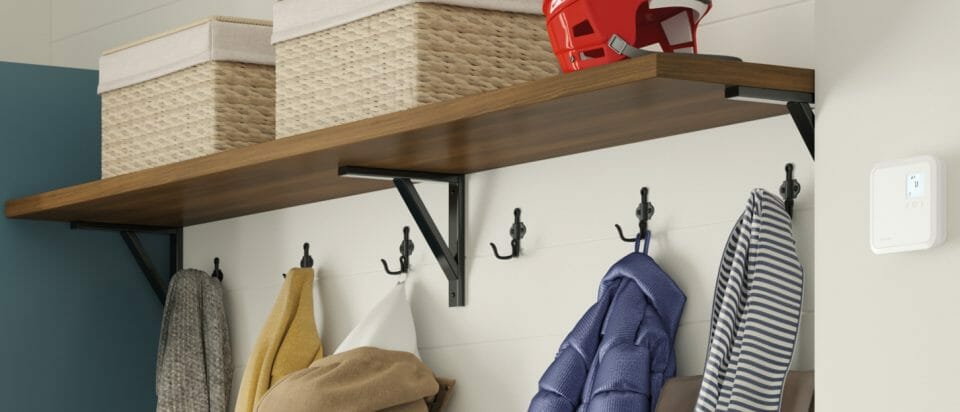
Use and maintenance of electronic thermostats
Like any electric heating system component, electronic thermostats require special attention to prevent incidents. Here are a few simple methods to avoid potential risks.
WHAT IS AN ELECTRONIC THERMOSTAT FOR AN ELECTRIC HEATING UNIT?
A thermostat is the control that keeps your heating unit running smoothly. It detects the ambient room temperature and modulates the heater’s power to the desired temperature or comfort level. The thermostat communicates to the heating unit the temperature setpoint to reach and at which to maintain the room temperature.
Setting the thermostat to a higher temperature than actually desired will not generate more power and will not heat the room any faster. Simply adjust the thermostat to the desired temperature, and it will signal the heating unit to reach that temperature as quickly as possible, then it will reduce the power to the appliance to maintain the temperature setpoint.
How fast a space heats up depends on the heating unit’s type and power. The insulation level of the room and fenestration type must also be considered. It is essential that the heating equipment be properly selected according to the parameters of the room to be heated.
Electronic thermostats are known to be very efficient and accurate as they also provide comfort and energy savings. Indeed, they include precise temperature sensors coupled with a sophisticated power modulation system, which ensures a fast response and minimizes the variations between the ambient temperature and the temperature setpoint on the thermostat (to an accuracy of ± 0.5° C). This technology offers a much higher comfort level than mechanical thermostats.

INSTALLING A THERMOSTAT
As with any electrical installation, electrical and thermostat connections must be performed by a certified electrician who complies with the electrical and building codes in your area.
To ensure the safety of the installation and comply with standards and the terms of the warranty, thermostats must be installed according to the technical specifications established by the manufacturer (see the user guide supplied with the product).
- An electronic thermostat must be connected to a certified electrical box.
- The power source must meet the thermostat’s specifications (usually 120V to 240V).
- Minimum and maximum loads must be maintained to ensure proper operation of the heater and prevent the thermostat from overheating.
- More than one heating unit can be connected to a thermostat; however, the maximum load must always be respected.
- The electrical system must be protected by a circuit breaker or the appropriate fuse.
- Sufficient clearance must be maintained around the thermostat to ensure proper ventilation so that heat from the thermostat can dissipate safely.
MAINTENANCE
Wall thermostats and thermostats integrated in heating units must be protected from liquids and excessive moisture (condensation). Use a dry cloth to dust them. Never use liquid cleaners as this may cause a malfunction.
SAFETY AND PRECAUTIONS
Not all thermostats have the same characteristics. They are designed to control a maximum heating power expressed in watts. It’s important to check your thermostat’s specifications to make sure it meets your specific needs.
The operation of an electronic thermostat requires that several electronic components be powered. These components generate heat even when the heating equipment is not powered. It is normal for your electronic thermostat to emit heat. Heat is safely evacuated through a heat sink inside the thermostat and through the openings around the thermostat.
Improper selection or installation of an electronic thermostat can cause damage. An electronic thermostat can overheat, especially if:
- The load is too high.
- The power supply wire and thermostat connections are not done properly.
- An abnormal power surge occurs.
- Ventilation openings are not properly cleared.

If you experience any issues with the operation of your electronic thermostat-because of overheating, blackening of the housing or a malfunctioning display-immediately close the circuit breaker or remove the corresponding fuse in your electrical panel and contact your electrician as soon as possible to have your installation inspected.
Associated products
Related articles
Design and safety standards of electronic thermostats
Stelpro electronic thermostats are designed to meet the highest safety standards. Each unit is certified by agencies such as CSA, […]
Electronic thermostat vs mechanical thermostats
The electronic thermostat already has a great reputation, but do we really know why that is? It is by far […]
Use and maintenance of electronic thermostats
Like any electric heating system component, electronic thermostats require special attention to prevent incidents. Here are a few simple methods […]
